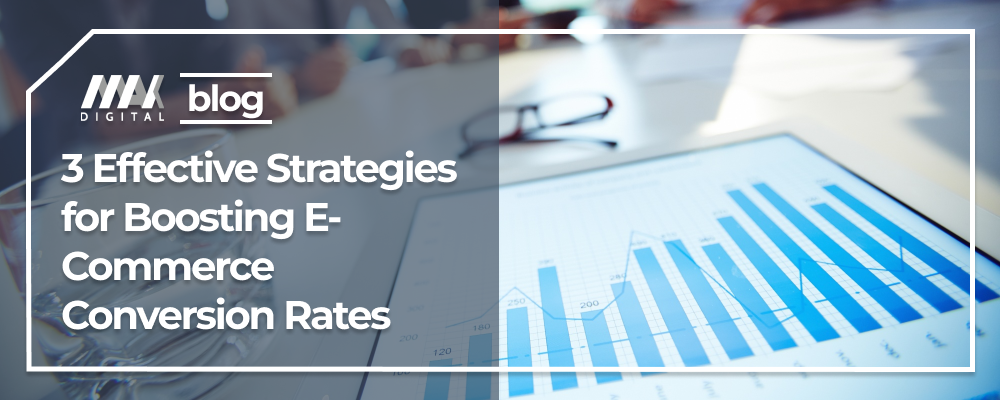
Understanding E-Commerce Conversion Rates
Before delving into the eCommerce strategies, let’s clarify the concept of e-commerce conversion rates. This KPI measures the percentage of e-commerce customers and users who successfully complete a desired action on your platform. For instance, it reveals the ratio of visitors who finalize a purchase compared to those who abandon their shopping carts.
1. Conduct A/B Testing for Data-Driven Optimization
Implementing A/B testing may initially seem like a laborious task, but when executed properly, it can be an accessible and enlightening method for evaluating the effectiveness of your e-commerce platform and refining your content.
A/B testing involves comparing two versions of a specific webpage or element: the control page (A) and the variation page (B). To initiate A/B testing on your e-commerce site, identify areas where you suspect users might drop out of the sales cycle. These areas could include the call-to-action at the bottom of a page, the placement of action buttons, or the content of your e-commerce pages.
Once you have identified the specific area to measure, modify the content (e.g., buttons or entire webpages) based on your desired outcome. The control page (A) remains unchanged, while the variation page (B) incorporates the modifications. To obtain accurate measurements and results, direct half of your webpage traffic to the modified version.
While your A/B testing is in progress, patiently collect sufficient data for accurate analysis. The testing software will distribute users equally between the control and variation pages, collecting user data and actions. A comprehensive report will be generated, highlighting the number of visitors, their activities, and any significant differences between the two pages. By leveraging these results, e-commerce managers can identify gaps in their sales funnels and make necessary adjustments to enhance the overall performance of their webpages.
2. Optimize Site Content to Engage Visitors
Engaging and targeted content is vital for maintaining visitor interest and facilitating conversions on your e-commerce site. When visitors click through email campaigns or PPC Google ads, it is essential that your content aligns with their expectations and accurately represents your offerings.
Even the smallest components of written content on your e-commerce pages can significantly impact conversions. Elements such as call-to-action buttons and error notifications should exude personality, conciseness, and keep potential buyers engaged. Consider experimenting with different wording for your call-to-action buttons and other page elements that would have effect on your active PPC campaigns!
Each piece of descriptive text on your e-commerce site should feel personalized to each individual customer. Product descriptions should be captivating, fun, and aligned with your brand’s personality. For example, if your brand is known for its casual and positive demeanor, ensure that this translates into every product description you write.
Furthermore, your content should flow smoothly and be easily readable, particularly on mobile devices. As online retail sales continue to grow, with a significant portion being made on mobile platforms, it is crucial to ensure that your text contrasts well with the website and does not dominate the mobile version of your webpages.
3. Foster Authentic Customer Reviews and Enhance Engagement
Are you frustrated with the conversion rates of your meticulously designed e-commerce site? While professional design is valuable, authentic customer reviews can make a substantial difference. Studies show that 61% of online consumers take the time to read reviews before making a purchase, seeking reassurance and trust in their buying decisions.
Why do reviews hold such influence? As social beings, we rely on the opinions and experiences of others to validate our choices. When we encounter positive feedback from previous customers, it instills confidence in the product and the provider.
To harness the power of customer reviews, it is essential to encourage and facilitate their generation. Make it easy for customers to leave reviews by implementing user-friendly review sections on your website or leveraging social media platforms. Consider creating a branded hashtag for your product and encourage customers to share their experiences using it. Social media reviews provide visual representations of your product in real-world contexts, allowing potential buyers to align their interests and needs with the experiences of others.
Additionally, consider utilizing case studies to showcase your expertise or the effectiveness of your products to a wider audience. Case studies can be prominently displayed on your website or shared on social media platforms. Not only can they serve as powerful endorsements of your product’s success, but they can also contribute to building brand awareness and driving conversions.
Other Key Elements for a Successful E-Commerce Site
Beyond the strategies discussed above, several other crucial elements contribute to the success of an e-commerce site. Effective e-commerce platforms should include:
- Clear and compelling call-to-action buttons that guide users to take desired actions.
- Engaging visuals and imagery that capture attention and create a positive user experience.
- Concise and descriptive product descriptions that effectively communicate the value of your offerings.
- An intuitive and streamlined checkout process that minimizes friction and facilitates smooth transactions.
Setting up your e-commerce site with these elements in mind is essential for optimizing your conversion rates and gaining an edge over competitors in the industry.
Final Thoughts on Enhancing E-Commerce Conversion Rates
To develop an effective e-commerce strategy and boost your conversion rates, always prioritize the customer experience and ensure a seamless journey throughout your website. Clearly define your goals for each element of your site, allowing you to identify areas for improvement and implement necessary revisions.
Start by analyzing your current e-commerce site’s performance and conversion rates using tools like Google Analytics. This will provide you with data-driven insights and serve as a baseline for future improvements. A/B testing is a powerful tool that can further enhance your conversion rates by highlighting effective changes on various pages of your site.
Remember, your content plays a crucial role in engaging visitors and facilitating conversions. Craft content that resonates with your target audience, aligns with your brand’s personality, and ensures a smooth user experience across all devices.
Lastly, customer reviews and engagement are invaluable in building trust and credibility. Encourage customers to leave reviews and leverage social media to showcase authentic experiences. Case studies can also be effective in demonstrating your expertise and product effectiveness.
By applying these tips and tactics, you can significantly boost your e-commerce conversion rates and position your online business for success.





